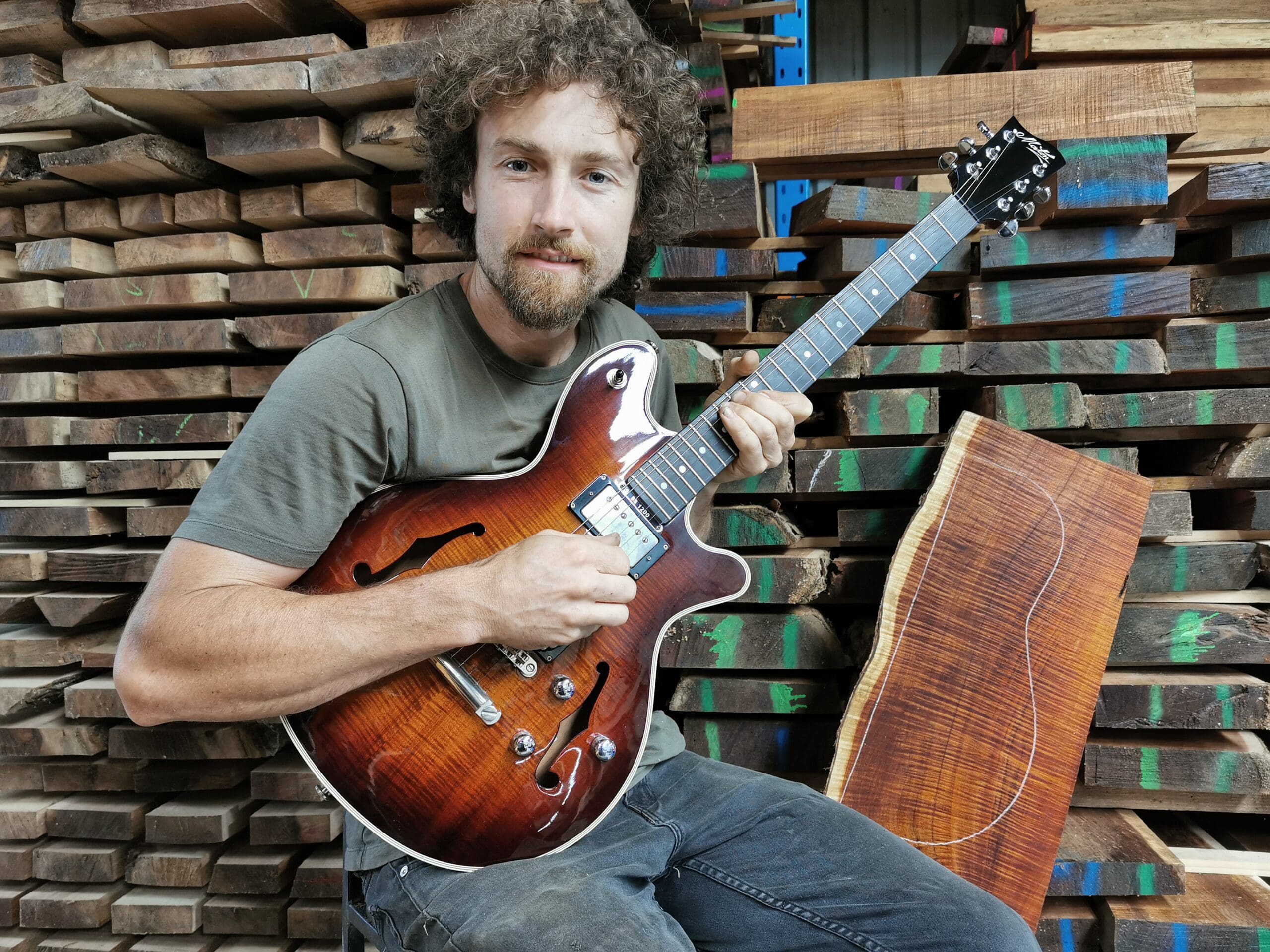
James has been in and around Victoria’s forests since he was a kid, helping his dad find wood for the exquisite musical instrument timber they produce for their business—Otways Tonewoods. In between, he’s also found time to study, work as an ecological consultant and land manager across Australia and become an active member of the agroforestry community.
JAMES KIDMAN
Can you tell us about your background?
From an early age I was working in the forest helping to source timber for musical instruments with my father in the Otway Ranges. This connection with the forest led me to study Botany, Conservation and Ecology at Melbourne University and I then started working as an ecological consultant, engaging closely with state and federal environmental legislation and assisting councils and landowners with managing and respecting environmental values.
Some of this work was based in Gippsland's forests and included sea spurge control at Marlo, blackberry monitoring at Cann River and in the Central Highlands and ecological burns at Stratford and Fernbank.
The void in understanding our country that was unfulfilled by science has also drawn me to work as a land manager with Traditional Owners in Central Australia, work that has helped me to better respect the interconnected relationship between humans and the bush.
Why did you get involved with the GFD?
The fate of Gippsland’s forests is too important to miss this opportunity for a strong community voice to be heard. It's time we put aside our differences and move forward on common ground with one voice, for the sake of our forests and for the sake of our community. The GFD is a way to bring people together and find that common voice and it also provides a way to resolve differences and move forward together in a balanced way that puts the needs of our environment and the people first.
"It is important for people to be involved and understand the potential for such a voice—one that can empower local communities that have otherwise been at the whim of broad political decisions. It is also time to respect the knowledge and aspirations of traditional custodians in creating a healthy country for all."
How has your work connected you to Victoria's forests over the years?
I’ve carried and cut timber, felled trees, calculated and established offset areas, mapped EVCs, collected seed, and undertaken threatened species surveys and ecological burns. I also enjoy a good hike through some old-growth and starting fire with traditional tools.
Where do you think the GFD can go from here?
The first two dialogues have been very positive, and I have enjoyed connecting with people and being part of the conversation. The ethos of the dialogue is very professional and inclusive and tackles topics that are of importance to me and the future prosperity of people and forests in Gippsland.
I feel that the GFD is establishing good footings to consolidate common ground among long-standing community differences. It is focusing in on what we recognise as healthy forests and provides the vision for what we need to be putting our attention towards.
And finally, what’s your favourite patch of forest?
Just one favourite? Ok—to get to my favourite patch of forest you need to find your way to the Ford River [between Aire Valley and the Otways], traverse the fallen myrtle across the winding water, then head over the next bend along to the fallen blackwood.
A short walk along the bank and you reach a junction where Holy Water runs into the Ford and a huge, 4.7 metre diameter Manna Gum towers above the wet forest. It’s a great spot for a picnic, but don't stay still too long or you'll end up as tucker for the leeches.

I feel that the GFD is establishing good footings to consolidate common ground among long-standing community differences. It is focusing in on what we recognise as healthy forests and provides the vision for what we need to be putting our attention towards.
